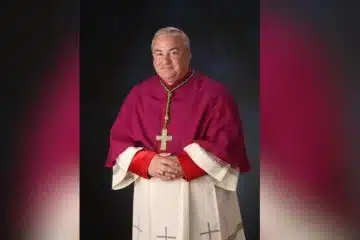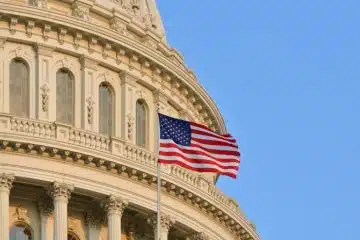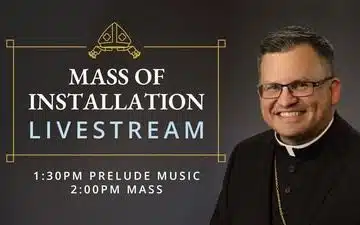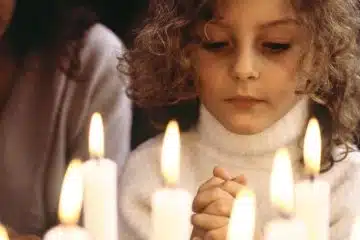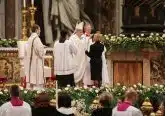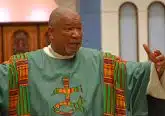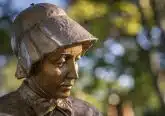Sainthood cause advances for religious sister, educator who fought racism
Baltimore, Md., Dec 11, 2019 / 12:30 am (CNA).- In the race to see who will become the first canonized black American saint, one candidate’s cause has advanced: Mother Mary Lange, a renowned educator and founder of the Oblate Sisters of Providence, the first community of religious sisters in the United States for women of color.
In an announcement last week from the Archdiocese of Baltimore, where Mother Mary Lange lived and served, Archbishop William Lori said that “I’m happy to say her cause is moving along.”
After meeting with Vatican officials about Lange’s cause last week, Lori reported that the paper arguing for her life of heroic virtue was nearly finished, and that the “positio,” another document arguing for her cause for canonization, was complete and being sent to the Congregation for the Causes of Saints. If approved, the document will be forwarded to Pope Francis, who would then be able to grant the title of “Venerable” to Mother Mary Lange.
Scant concrete details are known about the early life of Mother Lange. She was born Elizabeth Clarisse Lange sometime around the year 1784, most likely in a French-speaking area of Santiago, Cuba. Her parents were reportedly refugees who fled to Cuba from a revolution in their native Saint Domingue (in present-day Haiti), according to the Black and Indian Mission Office.
In the early 1800s, Lange emigrated to the United States from Cuba, and settled in Baltimore, Maryland, a popular landing spot for other French-speaking Catholic Haitian refugees at the time. She arrived in the U.S. well-educated and with some money to her name, indicating that her parents were also educated and well-off.
According to the Mother Lange Guild, Lange was living in Baltimore by 1813, and soon after realized that the children of her fellow refugees were in desperate need of education, something that was hard to come by for black children in pre-Civil War America.
Together with a friend, Marie Magdelaine Balas, Lange began offering free education to children of color from her home. In 1828, Lange was approached by a priest, Reverend James Hector Joubert, S.S., about officially founding a Catholic school for girls of color. Lange told the priest that she had been wanting to dedicate her life to God, and that she wanted to start not only the school but also a religious order of sisters for women of color. Permission was granted, and in 1829, Lange and three other women (including Balas) took their first vows as Oblate Sisters of Providence. Lange, who became the superior of the order, took the religious name of Mary, and became known as Mother Mary Lange.
The first paragraph of their order’s rule spelled out their vocation and mission: “The Oblate Sisters of Providence are a religious society of virgins and widows of color. Their end is to consecrate themselves to God in a special manner not only to sanctify themselves and thereby secure the greater glory of God, but also to work for the Christian education of colored children.”
“Our sole wish is to do the will of God,” Mother Lange once said of her order, according to the Oblate Sisters.
The school founded by the sisters, St. Frances Academy, is the oldest, continuously running school for black Catholics in the United States, and remains open today. By 1860, all children of color attending Catholic school in Baltimore were educated in schools run by the Oblate Sisters.
In 1843, the sisters suffered a blow at the death of Fr. Joubert, who had been their biggest supporter since the founding of the order. Combating poverty and racism, the sisters scrambled to shore up their order as some members left, and the Sulpician priests, the order to which Joubert had belonged, were no longer able to support the sisters.
“There was a sense of abandonment at the dwindling number of pupils and defections of her closest companions and co-workers,” the Mother Lange Guild states in her biography. “Yet, through it all Mother Mary never lost faith in Providence.”
During her lifetime, Lange and her sisters not only educated children of color, but they housed orphans and vulnerable elderly, and took in extra washing and mending and begged on the streets to support those in their care. In 1832, the sisters also cared for the terminally ill during the cholera epidemic. After the Civil War, the sisters cared for dozens of black orphans who were living in Baltimore. On February 3, 1882, after a long life of service to others, Mother Mary Lange died.
“Mother Mary Lange practiced faith to an extraordinary degree,” the Guild wrote of her. “In fact, it was her deep faith which enabled her to persevere against all odds. To her black brothers and sisters she gave of herself and her material possessions until she was empty of all but Jesus, whom she shared generously with all by being a living witness to his teaching.”
Lori added that Mother Lange was “a person who was in every way a pioneer” who “stood head and shoulders above the racism of her era.”
Should Lange be declared Venerable, the next step in her cause for canonization would be for a miracle through her intercession to occur and be approved by the Vatican.


